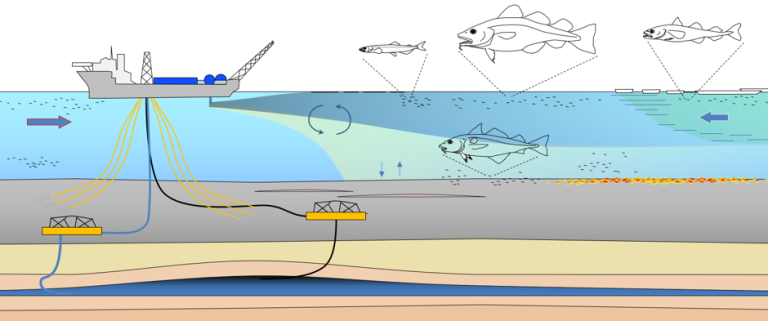
The environmental effects of offshore produced water discharges
Produced water is wastewater that is produced alongside oil and gas during production at offshore platforms, and which is separated and cleansed on the platform before it is reinjected to formations or discharged to the sea. In European waters, about 34,000 cubic meters of produced water are released per hour, and of this, approx. 43 % are Norwegian discharges. Since the beginning of the 1990s, a lot of research has been carried out in Norway on the possible environmental effects of such emissions, and over 400 scientific articles have been published. A review article in the journal Marine Environmental Research now reviews this knowledge base in its entirety.
Produced water discharges is a prioritized environmental research issue in Norway. This is because highly valued fishery resources exist in areas close to oil and gas platforms. Good knowledge and strict environmental regulations are needed to protect these key resources against pollution and other man-made perturbations. The offshore industry has shown good ability for adapting to strict operational regulations, and this has led to improved treatments, increased reinjection and reduced environmental risk of produced water discharges.
But certain concerns remain. Research shows that demersal fish over large parts of the North Sea have an increased incidence of so-called DNA adducts, i.e. environmental toxicants that are chemically bound to their genetic material. This is harmful to the fish. Researchers suspect that the phenomenon could be a long-term effect of discharges from the offshore industry, but more knowledge is needed here. There are also concerns associated with the prospect of future increased oil and gas activity in the Barents Sea, where much of the remaining oil and gas resources on the Norwegian continental shelf are found, together with large fishery resources. We know that the ecosystems in the Barents region are already under pressure as a result of global warming and intensive fishing. But how will these biological systems cope with additional stress from produced water and other discharges from the offshore industry?
The review article (free download) addresses such questions, provides an overview of Norwegian environmental research on produced water through 30 years, and highlights remaining knowledge gaps.
